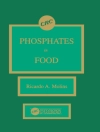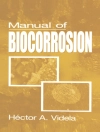In recent years, consumers are concentrating more on the health benefits of food in order to preserve a healthy lifestyle and therefore becoming more aware of the relationship between diet and disease. This has resulted in a gradual shift from animal-derived to plant-based meals. Functional foods have turned into one of the rapidly expanding areas of the food industry due to the increasing awareness of consumers working to prevent lethal diseases like cancer, diabetes mellitus and cardiovascular disease. Functional foods are seen as the food or food components that manifest efficiency in protecting from diseases and attaining a healthier lifestyle by administering additional benefits on human physiology and metabolic functions apart from basic nutritional requirements of the body.
Cereals hold a prominent place in this new market. Cereals and cereal foods are important energy sources and many phytochemicals such as dietary fiber, resistant starch, vitamins, minerals, lignans, phytic acid and phenolic compounds that provide a variety of health benefits. Eating functional cereal foods is an easy method to increase nutrients associated with whole grains without changing eating habits.
Functional Cereals and Cereal Foods: Properties, Functionality and Applications comprehensively covers the Chemistry and nutritional composition of functional cereals components, their functionality and therapeutic significance, current innovations and functional approaches in improving attributes and biofortification and quality improvement of cereal products. The different types of functional cereals and their unlimited opportunities for the production of functional foods are covered in full, including gluten-free products and all the newest cereal processing technologies. For researchers in search of a fully up-to-date look at functional cereal foods and technologies and their important place on the current market, this text provides a timely andcomprehensive overview.İçerik tablosu
Part I: Functional cereals.- 1.Functional cereals: functional components and benefits.- 2.Novel approaches to improve functional potential of cereals.- 3.Improvement of genetic variation for nutrients and bioactive food components in cereal crops.- 4.Functional Cereals for Gluten intolerance.- 5.Functionality of Resistant and Slowly Digested Starch in cereals.- 6.Functionality of β-glucan and fibers in cereals.- Part-ll FUNCTIONAL CEREAL FOODS.- 7.Prebiotic and probiotic potential of cereals.- 8.Cereal based fermented foods and non-alcohol beverages.- 9.Functional cereal-based bakery products, breakfast cereals, and pasta products.- 10.Cereal grain-based milks their potential health properties.- 11.Cereal grain tea and its potential health properties.- 12.Low GI functional foods.- 13.High fibers functional product.- 14. mi RNA-based genetic engineering for crop improvement and production of functional foods.
Yazar hakkında
Sneh Punia is a Researcher in the Department of Food, Nutrition, and Packaging Sciences at Clemson University in Clemson, USA
Sajid Maqsood is a professor and Researcher in the Food Science Department at College of Food and Agriculture at Emirates University in Al-Ain, United Arab Emirates
Anil Kumar Siroha is an Assistant Professor in the Department of Food Science and Technology at Chaudhary Devi Lal University in Sirsa, India












